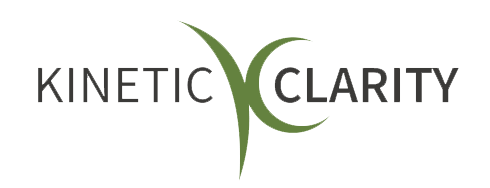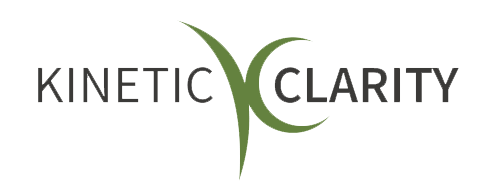Steering Through Storms: Mastering the Art of Conflict Resolution at Work
As experienced professionals, we all understand that the workplace is not merely a place of tasks and targets but also a dynamic space of interactions and relationships.

As experienced professionals, we all understand that the workplace is not merely a place of tasks and targets but also a dynamic space of interactions and relationships. Amidst this complex web of varied perspectives and personalities, conflicts are inevitable. However, we should not view them as roadblocks but as opportunities to grow, evolve, and strengthen our teams.
When managed effectively, conflicts can fuel innovation, improve communication, and foster a healthier work environment. So, how do we pivot from destructive disputes to constructive dialogues? Let's delve into some practical strategies to help you navigate and resolve workplace conflicts gracefully and effectively.
Cultivate a Culture of Open Communication
In a bustling workplace, it's not surprising that communication breakdowns are often at the heart of conflicts. Developing a culture of open communication is crucial to preventing and resolving these issues effectively.
Nothing beats transparency when it comes to conflict resolution. Promote an environment where your team feels comfortable expressing their thoughts and concerns without fear of judgment or retaliation. This openness encourages dialogue over debate, making conflict resolution a collaborative process rather than a battle of egos.
But what does open communication look like?
- Encourage Honesty: Inspire your team to honestly voice their thoughts, feelings, and concerns. Make it clear that their opinions are valued and that candidness is appreciated, not penalized. Let them know that it's okay to agree to disagree and that differing viewpoints can stimulate creativity and innovation.
- Promote Regular Interaction: Regular team meetings and one-on-one sessions provide platforms for sharing information, discussing problems, and making collective decisions. They also help to nip potential conflicts in the bud, resolving issues before they escalate.
- Foster Psychological Safety: Team members are more likely to communicate openly if they feel psychologically safe - that is, they trust that they won't be humiliated or punished for speaking up. Leaders can build this environment by responding positively to suggestions and criticism, treating mistakes as learning opportunities, and advocating for a blame-free culture.
- Lead by Example: Leaders should model the transparency they wish to see in their teams. This means openly acknowledging your own mistakes, keeping your team informed about organizational developments, and being straightforward yet tactful in your feedback.
- Train in Communication Skills: Provide training in practical communication skills, including active listening, nonverbal communication, and giving and receiving feedback. This can equip your team with the tools to express themselves clearly, empathetically, and respectfully, reducing the risk of misunderstandings and conflicts.
- Use Clear, Consistent Channels of Communication: Establishing clear, reliable channels of communication can prevent a lot of frustration and confusion. Whether it's email, team meetings, or an internal messaging platform, make sure everyone knows where to look for information and how to reach out when they have questions or concerns.
Practice Active Listening
Active listening is a critical tool for any leader. It's not just about hearing words; it's about understanding the intent behind them. Pay attention to non-verbal cues, clarify points if unsure, and provide feedback to show genuine engagement in the conversation. This approach allows for a deeper understanding of the issues at hand and paves the way toward a more effective resolution.
Here are some ways to cultivate and demonstrate active listening:
- Maintain Focus: During a conversation, keep distractions to a minimum. Put away your phone, close your laptop, and give the speaker your full attention. Your undivided focus helps you understand the issue better and shows respect and appreciation for the speaker's thoughts and feelings.
- Show Engagement: Use non-verbal cues to show you're engaged. This could be nodding, maintaining eye contact, or adopting open body language. These signals can reassure the speaker that you're genuinely listening to them and value what they're saying.
- Reflect and Clarify: After the speaker has shared their perspective, paraphrase or summarize what you've heard to confirm your understanding. If you're unsure about something, ask for clarification. For instance, "So, what I'm hearing is..." or "Do you mean that...?" This helps avoid misinterpretations and shows that you truly want to comprehend their viewpoint.
- Avoid Interrupting: Allow the speaker to finish their thoughts before you respond. Interrupting disrupts the flow of the conversation and can come across as disrespectful. If you have something to say, make a mental note and bring it up when the speaker has finished.
- Respond Empathetically: Once you're sure you've understood, respond empathetically. Show that you appreciate their feelings and concerns, even if you don't necessarily agree with them. This can help defuse tension and pave the way for a constructive discussion.
- Ask Open-Ended Questions: Encourage the speaker to elaborate on their thoughts and feelings by asking open-ended questions. This can provide more depth and detail, helping you understand the issue from their perspective.
Employ the TKi Tool
The Thomas-Kilmann Conflict Mode Instrument (TKi) is an exceptional tool that helps understand different conflict-handling styles and their appropriate uses. By appreciating that different situations call for different approaches - be it competing, collaborating, compromising, avoiding, or accommodating - you can select the most suitable strategy for conflict resolution—the TKi tool aids in making this choice wisely and objectively.
- Competing: This style is assertive and uncooperative. It's about standing your ground and pursuing your interests, even at the expense of others. This approach might be helpful when quick, decisive action is necessary or when unpopular decisions need to be implemented.
- Collaborating: This style is both assertive and cooperative. It involves working with the other party to find a solution that fully satisfies both sides. It's particularly useful when the stakes are high for both parties and a mutually beneficial solution is possible.
- Compromising: This style falls in the middle in terms of assertiveness and cooperativeness. It's about finding a fair compromise where both parties get something but not everything they want. This can be effective when the cost of conflict is higher than the benefit of winning.
- Avoiding: This style is unassertive and uncooperative. It involves sidestepping the conflict or delaying it. While it's not a long-term solution, it can be helpful when the issue is trivial or when there's a need to buy some time to think things over or let things cool down.
- Accommodating: This style is cooperative but unassertive. It involves yielding to the other party, often at the expense of your own goals. This approach can be appropriate when the issue is more critical to the other party or when maintaining harmony in the relationship is the priority.
Use 'Rumble Starters'
As their name suggests, Rumble Starters are phrases designed to start difficult conversations (or "rumbles") in a non-confrontational and respectful manner. These conversation openers help defuse tensions and set a positive tone for discussions. Phrases such as "I might be wrong, but..." or "I'm wondering if..." can help break the ice, promoting open-mindedness and willingness to find common ground. This can drastically reduce the emotional intensity, making the conversation more productive.
Here's how you can use them effectively:
- Invite Open Dialogue: Starting a conversation with phrases like, "I'm wondering if..." or "I noticed that..." invites open dialogue and avoids blame. These phrases open up the conversation in a non-threatening way, allowing for constructive discussion instead of defensiveness.
- Express Curiosity: Rumble Starters often include phrases that express curiosity or a desire to learn more. Examples might be, "Could you tell me more about...?" or "I'm interested to hear your thoughts on...". By showing interest, you encourage others to share their perspectives, which can lead to deeper understanding and empathy.
- Admit Uncertainty: Rumble Starters also involve admitting that you may not have all the answers or may be wrong. Phrases like "I might be wrong, but..." or "I'm not sure if this is right, but..." express humility and a willingness to learn, which can facilitate a more open and respectful exchange of ideas.
- Emphasize Collaboration: Using phrases like, "I'm thinking we might..." or "How do you feel about us trying..." emphasizes working together towards a solution. It reinforces the notion that you're in this together, fostering a sense of teamwork and collaboration.
Embrace the 'Yes...And' Approach:
'Yes...And' is a communication strategy rooted in improvisational theater, but it's also incredibly effective in professional settings. It involves acknowledging the other person's perspective (Yes) and then adding your own viewpoint or proposal (And). This method fosters collaboration and respect for diverse ideas, fostering an atmosphere of problem-solving rather than one-upmanship. It's a way of saying, "Your thoughts matter to me, and here's what I think." It can create wonders in transforming conflict into cooperation.
- Affirm and Add: The 'Yes...And' technique involves acknowledging the other person's perspective ('Yes') and then adding your viewpoint or suggestion ('And'). This method is a departure from the 'Yes...But' approach, which often feels confrontational or dismissive.
- Foster Inclusivity: The 'Yes' part of the approach confirms that you've heard and understood the other person's perspective. It sends a powerful message that their thoughts and feelings are valid and valuable, fostering an atmosphere of respect and inclusivity.
- Promote Collaboration: The 'And' part of the equation is your opportunity to contribute your own ideas or perspectives. It promotes collaboration rather than competition, adding to the conversation rather than negating the other person's viewpoint.
- Encourage Solution-Oriented Discussions: 'Yes...And' is fundamentally solution-oriented. Instead of getting stuck in an argument about who's right and who's wrong, it keeps the conversation moving toward finding a solution that respects everyone's input.
- Enhance Team Dynamics: The 'Yes...And' approach helps foster a sense of team unity. It underscores the idea that everyone's perspective is important and that you can arrive at more innovative, holistic solutions by listening and building on each other's ideas.
Wrapping Up
Effective conflict resolution is less about being the loudest voice in the room and more about understanding, empathy, and strategic communication. Remember, storms don't last forever, and navigating them skillfully can lead to brighter, more peaceful skies for your team.
As you navigate these situations and adopt these tools, you may just find that conflicts become less of a hurdle and more of a catalyst for growth and innovation. Here's to stronger, more resilient teams that thrive in the face of challenge!












